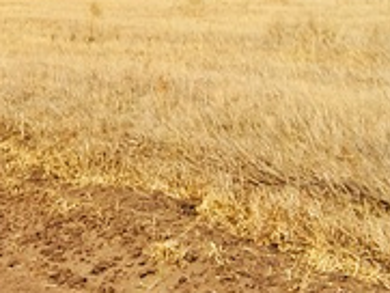Francisca de Vries, University of Manchester, UK, and colleagues have studied how soil microbial networks are changing due to a drought in Europe, e.g., as seen this summer. They did a long-term experiment in the greenhouse. For this, they sowed typical grasses in soil taken from meadows and allowed them to grow for two years. In the second year, they exposed half of the grasslands to a century-long drought, much like that of many parts of Europe this year.
While the fungi in the soil survived the drought surprisingly well and even profited from it, the biodiversity and abundance of the soil bacteria plummeted during the dry period. At the same time, the structure of the bacterial networks changed significantly. They developed features that indicate low stability in the event of the disruption.
And even after the soils got enough water again, the bacterial communities did not recover. Two months later, the number of microbes and their activity was significantly reduced. As a result, ecological functions of soils such as nitrogen retention and soil respiration were measurably impaired long after the drought.
Another, lasting effect of the drought was a change in the species composition of the vegetation: fast-growing grass species such as the meadow ball grass (Dactylis glomerata) tolerated the dryness better. They, therefore, expanded more and displaced the slower growing ryegrass (Anthoxanthum odoratum). This, in turn, affected the bacterial communities in the soil. If heat waves and droughts increase in the future, this could fundamentally change the biology of soils and meadows.
This year’s hot and dry summer should be a wake-up call, as it is a taste of the weather pressures that are yet to come, the researchers say. So far, the researchers have performed their experiment only for grassland. Further studies have to clarify how other soils react to droughts and how long this reaction then works.
- Soil bacterial networks are less stable under drought than fungal networks,
Franciska T. de Vries, Rob I. Griffiths, Mark Bailey, Hayley Craig, Mariangela Girlanda, Hyun Soon Gweon, Sara Hallin, Aurore Kaisermann, Aidan M. Keith, Marina Kretzschmar, Philippe Lemanceau, Erica Lumini, Kelly E. Mason, Anna Oliver, Nick Ostle, James I. Prosser, Cecile Thion, Bruce Thomson, Richard D. Bardgett,
Nature Communic. 2018.
https://doi.org/10.1038/s41467-018-05516-7



